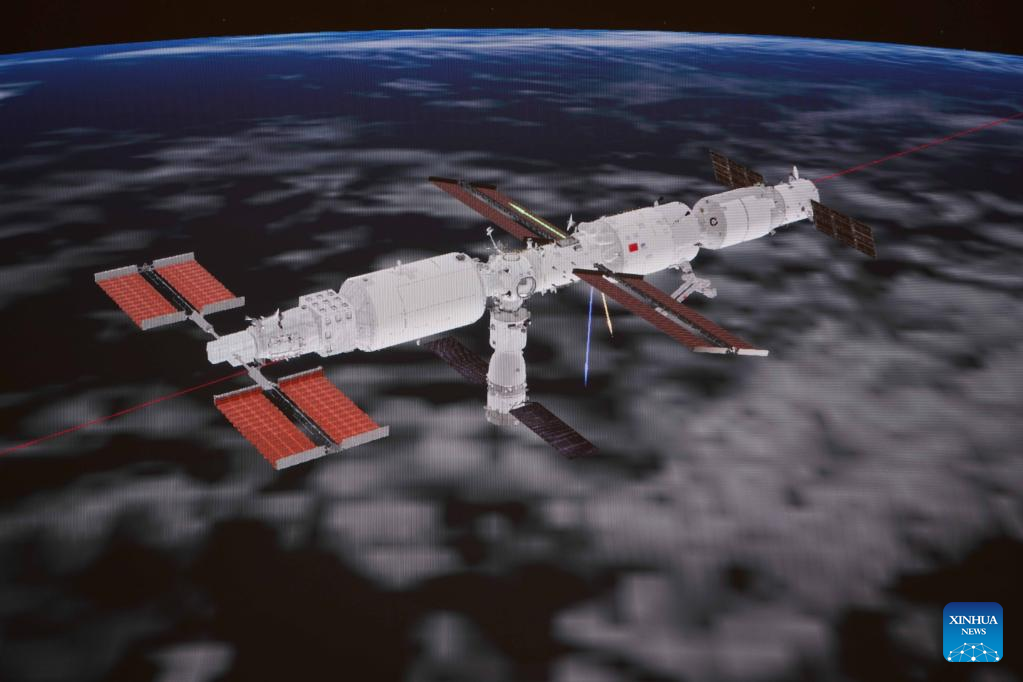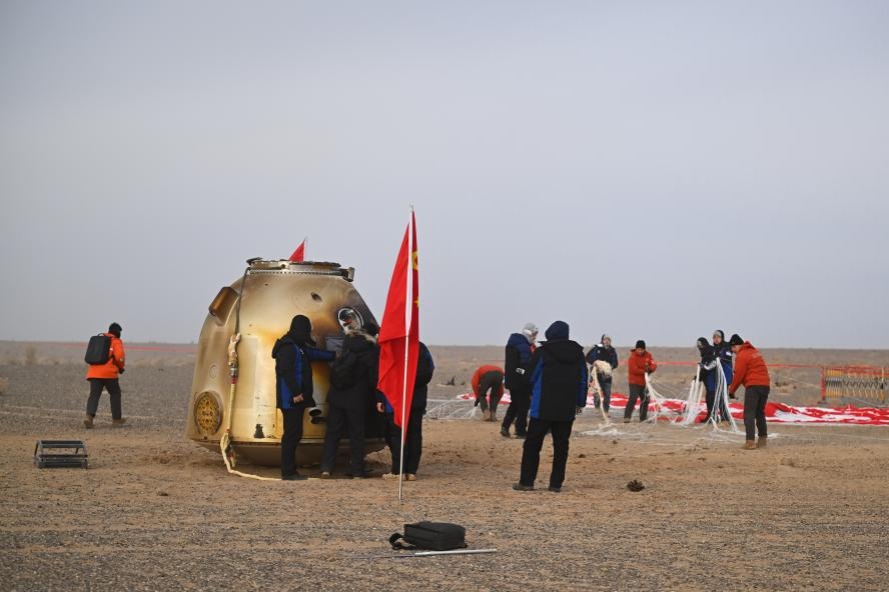Wentian space lab goes into orbit


Platform for science
The first lab component of the Tiangong station, Wentian features cutting-edge technologies, strong capabilities, sophisticated design and represents a new milestone in China's space industry. It incorporates the wisdom, dedication and hard work of numerous scientists, engineers and technicians, according to the China Academy of Space Technology, which was responsible for designing and making the craft.
The vehicle consists of three major parts-a crew working compartment, an airlock cabin and an unpressurized service module.
Weighing 23 metric tons, the space lab is 17.9 meters tall, roughly equivalent to a six-story residential building, and has a diameter of 4.2 meters. It is the largest and heaviest spacecraft China has ever built and also the world's heaviest self-propelled spaceship in service, said Zhang Qiao, head designer of Wentian's overall structure.
The flexible solar panels of the lab are the largest of their kind in China. When fully unfolded, they are more than 55 meters long and have a combined area of nearly 280 square meters.
After Wentian is connected to the Tianhe module, its airlock cabin will replace the one on Tianhe to become the main place for astronauts to put on their spacewalk suits and move out of the space station.
"Its inner space is bigger than that of the airlock cabin on the core module while its hatch is wider, making it easier for astronauts to make preparations and carry out spacewalks," Zhang said.
Inside the gigantic lab, there are eight scientific cabinets. They will mainly be used for biological and life science studies and can support research on the growth, aging and genetic traits of plants, animals and microbes in the environment of space, he said.
Outside the airlock cabin, there are 22 extravehicular payload adapters capable of carrying scientific equipment needed for experiments that require exposure to the space environment, cosmic rays, vacuum and solar winds, Zhang added.
"In addition to its scientific functions, Wentian also serves as a backup control station to the Tianhe core module in case of emergencies or malfunctions. It has all the same flight-control devices as those inside the core module to operate the entire Tiangong station," Zhang said.
The designer added that the craft also has three separate sleeping quarters and an independent section for personal hygiene. They can be used in emergencies or handovers by two crews.
Wentian also has a five-meter robotic arm that can be used to move small and medium-sized equipment. It can be linked with the 10-meter robotic arm on the Tianhe module to create a joint arm capable of reaching all major parts of the Tiangong station, according to the designer.























